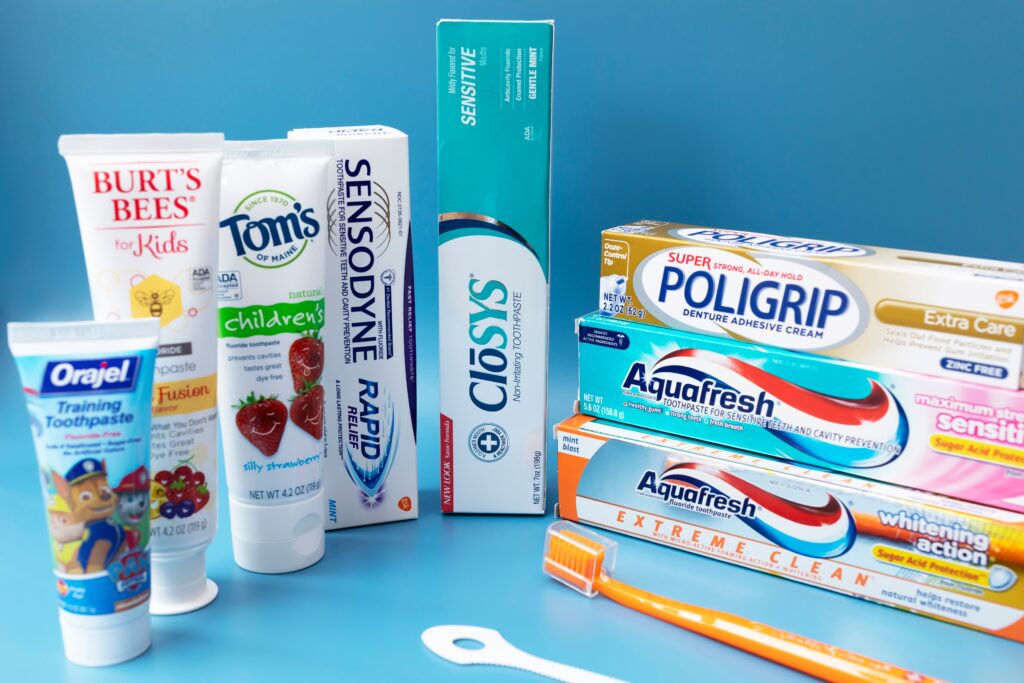Manter uma boa saúde bucal é crucial para o bem-estar geral e a confiança. Uma boca saudável não só nos permite comer e falar corretamente, como também contribui para o nosso bem-estar físico e mental. O creme dental desempenha um papel vital na nossa rotina diária de cuidados dentários, e compreender a ciência por trás de sua formulação pode nos ajudar a escolher o creme dental mais eficaz para uma saúde bucal ideal.
Compreendendo a formulação da pasta de dente

O creme dental é uma fórmula especializada que combina vários ingredientes para desempenhar funções específicas. É composto por uma base, agentes ativos, aromatizantes, adoçantes e conservantes. Cada ingrediente utilizado na formulação do creme dental tem uma finalidade única: garantir a limpeza ideal, a prevenção de cáries e a saúde bucal em geral. Atualmente, cada vez mais fabricantes de cremes dentais oferecem soluções de qualidade, como: fabricação sob contrato ou produtos de cuidados orais de marca própria, para que os profissionais de cuidados orais ou inovadores em produtos odontológicos possam formular o creme dental de forma eficaz.
- Abrasivos para limpeza eficaz e remoção de manchas: Abrasivos são cruciais nas formulações de pastas de dente, pois auxiliam na remoção de placa bacteriana, manchas e partículas de alimentos da superfície dos dentes. Agentes abrasivos comuns em pastas de dente incluem carbonato de cálcio, sílica gel desidratada e hidróxido de alumínio.
- Flúor para fortalecimento do esmalte e prevenção de cáries: O flúor é um ingrediente essencial em pastas de dente que fortalece eficazmente o esmalte e previne cáries. Ele remineraliza as áreas enfraquecidas dos dentes, tornando-os mais resistentes aos ataques ácidos. Fluoreto de sódio e fluoreto estanoso são formas de flúor comumente usadas em pastas de dente.
- Umectantes para retenção de umidade e melhoria da textura: Umectantes são adicionados à pasta de dente para melhorar a textura, prevenir o ressecamento e melhorar a retenção de umidade. Glicerina e sorbitol são umectantes comumente usados que proporcionam uma escovação suave e agradável.
- Aglutinantes para consistência e estabilidade: Os aglutinantes garantem que o creme dental mantenha a consistência e a estabilidade desejadas. Eles ajudam a manter a fórmula do creme dental coesa. Os aglutinantes comuns incluem derivados sintéticos de celulose e coloides de algas marinhas.
- Surfactantes para formação de espuma e capacidade de espalhamento: Os surfactantes são responsáveis pela formação de espuma e pela capacidade de espalhamento. Eles ajudam a distribuir os agentes ativos do creme dental uniformemente na boca e melhoram a experiência geral de limpeza. O lauril sulfato de sódio (SLS) é um surfactante comumente usado em cremes dentais.
Formulação recomendada por dentistas

- Identificando o equilíbrio ideal de ingredientes: Dentistas recomendam formulações de cremes dentais que atinjam o equilíbrio ideal entre limpeza eficaz, prevenção de cáries e manutenção da saúde bucal. Cremes dentais com uma combinação completa de abrasivos, flúor e outros ingredientes ativos garantem um cuidado bucal completo.
- Importância da concentração de flúor para prevenção de cáries: A concentração de flúor no creme dental é vital para a prevenção de cáries. Dentistas recomendam cremes dentais com concentração de flúor de pelo menos 1.000 a 1.500 partes por milhão (ppm) para proporcionar proteção ideal ao esmalte e prevenir cáries.
- Escolhendo o abrasivo certo para uma limpeza suave, mas eficaz: Formulações de cremes dentais com abrasivos suaves são essenciais para evitar a erosão do esmalte e, ao mesmo tempo, limpar os dentes com eficácia. Abrasivos balanceados garantem a remoção adequada de manchas sem causar danos aos dentes.
- Níveis de pH ideais para manter a saúde bucalManter níveis adequados de pH no creme dental é crucial para prevenir a acidez e promover a saúde bucal. O creme dental recomendado por dentistas mantém um pH neutro para prevenir a erosão do esmalte e manter um ambiente bucal saudável.
- Papel dos umectantes na prevenção da boca seca: A boca seca pode levar a problemas de saúde bucal, como mau hálito e cáries. Formulações de cremes dentais com umectantes como a glicerina ajudam a prevenir a boca seca, retendo a umidade e promovendo a produção de saliva.
- Selecionando o ligante mais adequado para textura e estabilidadeEscolher o aglutinante certo garante que o creme dental mantenha sua textura e estabilidade ao longo de sua vida útil. O aglutinante apropriado ajuda a manter a consistência desejada e garante que o creme dental permaneça utilizável até a última tragada.
- Surfactantes não irritantes para uma experiência de escovação agradável: Formulações de cremes dentais com surfactantes não irritantes proporcionam uma experiência de escovação agradável, permitindo a formação de espuma e a fácil distribuição. Surfactantes suaves garantem que o creme dental limpe eficazmente sem causar sensações desconfortáveis na boca.
Fórmulas de creme dental especializadas para necessidades específicas

- Creme dental clareador: clareando seu sorriso com segurança: Os cremes dentais clareadores contêm ingredientes específicos desenvolvidos para remover manchas extrínsecas e restaurar a brancura natural dos dentes. Essas formulações de cremes dentais geralmente incluem abrasivos suaves e produtos químicos como peróxido de hidrogênio ou peróxido de carbamida para remover manchas superficiais e clarear o sorriso.
- Creme dental para sensibilidade: aliviando a sensibilidade dentária: O creme dental Sensitive é especialmente formulado para aliviar a sensibilidade dentária causada pela exposição da dentina ou pela retração gengival. Essas formulações de creme dental contêm agentes dessensibilizantes, como nitrato de potássio ou acetato de estrôncio, para bloquear as sensações nervosas e aliviar a sensibilidade.
- Pasta de dente natural: explorando alternativas sem produtos químicos: Cremes dentais naturais atraem aqueles que buscam alternativas sem produtos químicos. Essas formulações de cremes dentais utilizam ingredientes naturais como bicarbonato de sódio, óleo de melaleuca ou óleo de coco por suas propriedades antissépticas e antibacterianas. É importante avaliar os benefícios e as limitações dos cremes dentais naturais, pois eles nem sempre oferecem o mesmo nível de eficácia dos cremes dentais convencionais.
Inovações em pasta de dente e tendências emergentes

- Tecnologias avançadas de pasta de dente para cuidados bucais aprimorados: Os avanços na tecnologia de pastas de dente introduziram novos ingredientes e formulações para aprimorar os cuidados bucais. A nano-hidroxiapatita é uma alternativa emergente ao flúor que promove a remineralização do esmalte. Agentes antibacterianos como o triclosan ou óleos essenciais são eficazes no combate à placa bacteriana e à doença gengival.
- Pasta de dentes à base de ervas e ayurvédica: aproveitando o poder da natureza: Formulações de cremes dentais à base de ervas e ayurvédicos aproveitam o poder dos ingredientes naturais para promover a saúde bucal. Elas incorporam ervas como nim, cravo ou alcaçuz, conhecidas por suas propriedades antibacterianas e anti-inflamatórias. Além disso, alguns cremes dentais à base de ervas podem usar extratos naturais que fortalecem a imunidade, como aloe vera ou chá verde, para auxiliar na saúde bucal em geral.
Escolhendo a pasta de dente certa para você

Ao selecionar pasta de dente, vários fatores devem ser considerados:
- Necessidades e objetivos pessoais de saúde bucal: Avalie suas necessidades de saúde bucal, como prevenção de cáries, remoção de placa bacteriana ou remoção de manchas. Considere seus objetivos, seja para clarear os dentes, reduzir a sensibilidade ou manter a saúde bucal em geral.
- Sensibilidade a ingredientes específicos: Considere quaisquer alergias ou sensibilidades a determinados ingredientes. Algumas pessoas podem ser sensíveis ao SLS ou a certos sabores, por isso é importante ler os rótulos e escolher um creme dental que atenda às suas necessidades.
- Procure orientação de um dentista: Também é aconselhável procurar aconselhamento profissional com seu dentista. Ele pode fornecer recomendações personalizadas com base na sua condição e necessidades de saúde bucal.
Técnica e rotina adequadas de escovação dos dentes

- Recomendações de frequência e duração da escovação: Os dentistas recomendam escovar os dentes pelo menos duas vezes ao dia, de preferência após as refeições. Escovar por dois minutos é o tempo recomendado para garantir a remoção completa da placa bacteriana.
- Técnica de escovação correta para remoção ideal da placa bacteriana: Para uma remoção eficaz da placa bacteriana, escove os dentes em movimentos circulares num ângulo de 45 graus em direção à linha da gengiva. Preste atenção a todas as superfícies, incluindo a língua, usando um raspador ou a parte de trás da escova de dentes para uma limpeza suave. Isso evita o acúmulo de bactérias e o mau hálito.
Além da pasta de dente: práticas complementares de cuidados bucais

- Importância do uso do fio dental para limpeza interdental: O uso do fio dental é uma parte essencial da higiene bucal que não deve ser negligenciada. Ele ajuda a remover a placa bacteriana e os resíduos de alimentos entre os dentes, que a escova de dentes não alcança. Incorporar o uso diário do fio dental à sua rotina garante uma higiene bucal completa.
- O papel do enxaguante bucal na manutenção da higiene bucal: O enxaguante bucal pode ser usado como um complemento para a manutenção da higiene bucal. Ajuda a refrescar o hálito, reduzir o acúmulo de placa bacteriana e alcançar áreas difíceis de limpar apenas com escova de dentes ou fio dental. Escolha um enxaguante bucal que atenda às suas necessidades específicas, como um enxaguante bucal com flúor para prevenção de cáries ou um enxaguante bucal antibacteriano para a saúde das gengivas.
- Outras práticas de cuidado bucal a serem consideradas para uma rotina abrangente: Práticas adicionais de higiene bucal que contribuem para uma rotina completa incluem o uso de escovas interdentais, irrigadores orais e raspadores de língua. Essas ferramentas ajudam a remover placa bacteriana e resíduos de áreas de difícil acesso, garantindo uma limpeza completa.
Mantendo a saúde bucal por toda a vida

- Consistência na rotina diária de cuidados orais: A consistência é fundamental para manter uma saúde bucal ideal. Seguir uma rotina diária de cuidados bucais, que inclui escovação, uso de fio dental e enxaguante bucal, garante benefícios a longo prazo para a saúde bucal.
- Consultas dentárias regulares e limpezas profissionais: Consultas odontológicas regulares e limpezas profissionais são cruciais para detectar e tratar quaisquer problemas dentários precocemente. Os dentistas também podem oferecer tratamentos especializados, como aplicações de flúor ou selantes dentais, para melhorar ainda mais a saúde bucal.
- Hábitos de vida que impactam a saúde bucal: Manter uma saúde bucal ideal envolve uma dieta balanceada, rica em cálcio e vitamina D, evitando hábitos destrutivos como roer unhas, ranger os dentes e fumar.
Conclusão
Entender as formulações dos cremes dentais orienta a escolha para uma saúde bucal ideal. Identifique suas necessidades, procure orientação profissional e selecione o creme dental certo. Lembre-se: isso faz parte de uma rotina mais ampla de cuidados bucais. Consultas regulares, escovação adequada e práticas adicionais contribuem para uma vida inteira de sorrisos saudáveis. Capacite-se com conhecimento para um sorriso radiante.


